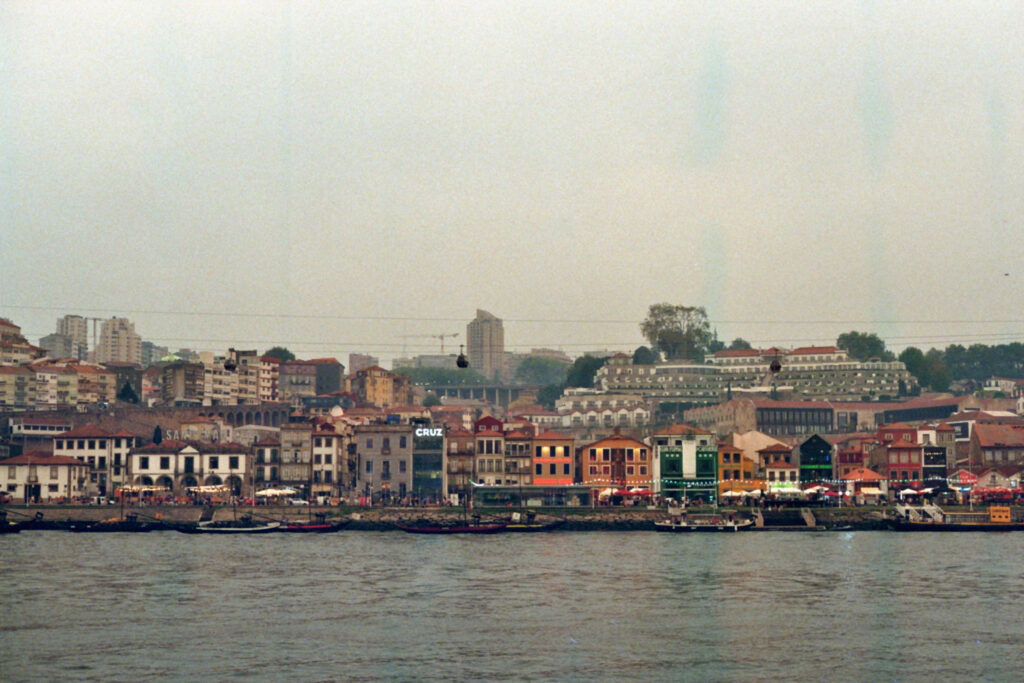all images shown here were taken analog with my canon ae I
porto, the second-largest city in portugal, is located on the northwest coast of the country and is known for its historic old town as well as its significance in port wine production. the old town, ribeira, was declared a unesco world heritage site in 1996 and is characterized by narrow streets, colorful and narrow houses, and important architectural landmarks. the city has played a central role in the history of port wine, which has been produced here since the 17th century. the wine cellars are mainly located in vila nova de gaia, a suburb of porto on the other side of the douro river.
the narrow houses

the narrow houses in porto have their origins in historical and economic factors that date back centuries. a key reason for their design was the property tax, which in the middle ages and early modern period was often levied based on the width of the building’s facade. to minimize these taxes, many homeowners opted to build narrow houses that took up little space on the street but often extended deep into the lot. this allowed them to reduce their tax burden without sacrificing living space.


in addition, the city’s topography played an important role. porto is built on hills and along the steep banks of the douro river, which further limited the available building space. the narrow, winding streets and alleys of the old town forced residents to build their homes vertically to make the most of the limited space.

moreover, this architectural style maximized street access, which was crucial for urban commerce. many of these narrow houses had shops or workshops on the ground floor, while the upper floors were used as living quarters. this functional layout promoted urban life and brought work and living spaces closer together.
overall, the architecture of porto’s narrow houses is a combination of tax policies, geographical constraints, and economic factors that evolved over centuries and continues to define the city’s distinctive urban landscape.

port wine
port wine, a globally renowned and appreciated fortified wine, is closely tied to the city of porto and the surrounding region. the name “port wine” derives directly from porto, although the grapes used to make it are primarily grown in the douro valley, one of the world’s oldest wine regions. the unique location of the douro valley, with its steep slopes and specific microclimate, provides ideal conditions for viticulture. after the harvest, the grapes are processed into wine in the valley and then transported to porto or to vila nova de gaia, located across the douro river from porto.

since the 17th century, the city of porto has played a key role in the export of port wine, especially to britain, which contributed significantly to the international spread of this wine. a crucial step in port wine production is the addition of brandy to stop the fermentation process early. this results in a higher sugar content, giving the wine its characteristic sweetness and higher alcohol content.
historically, port wine merchants stored their barrels in the cooler cellars of vila nova de gaia, where the wine could age. even today, many of the most famous port wine cellars are located there, offering guided tours and tastings.

to be continued…
